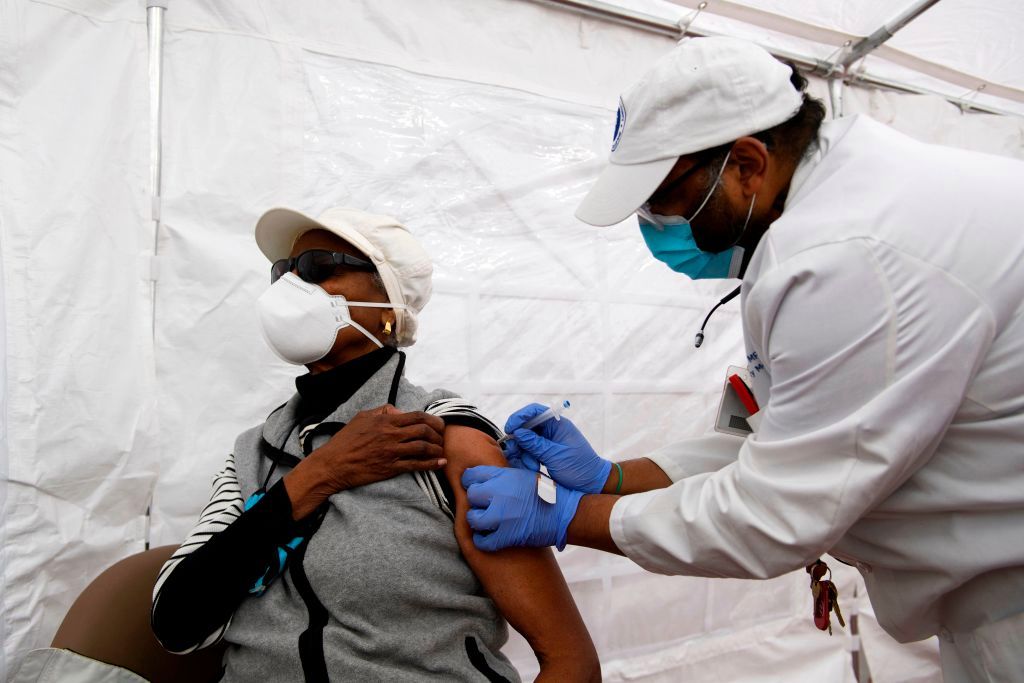Racial Disparities In Vaccine Distribution Demand Equity In Priorities
Vaccine distribution is not keeping up with the impact of COVID-19 on Black and other communities of color. Ongoing disparities in vaccine distribution show the need for targeted efforts to provide coverage to impacted groups.
States are expanding eligibility in vaccine rollout but vaccination rates for Black people lag in comparison to the white counterparts. A new analysis from Kaiser Health News showed that in states that provide race and ethnicity data, white people have a vaccination rate that is two to three times that of their Black counterparts. It’s even higher in Pennsylvania at four times the rate.
One of President Joe Biden’s priorities in the first week of his administration was establishing the COVID-19 Equity Task Force. Co-chaired by Dr. Marcella Nunez-Smith, the task force is looking at how to prioritize hard-hit communities in vaccine distribution.
“Now is the time to lift our national policy from the quicksand of racial injustice to the solid rock of human dignity.” — Dr. King
As we work to distribute this vaccine safely, quickly, and equitably, we will ensure communities hit hardest by the virus get the care they need. pic.twitter.com/xn51O2zKTc
— Dr. Marcella Nunez-Smith (@DrNunezSmith) January 18, 2021
During a CNN town hall, Nunez-Smith challenged people to look beyond naming that racial disparities exist, and digging deeper into the root causes. Nunez-Smith said that equity and accessibility were key priorities built into the Biden Administration’s national plan.
Even as Biden proposes to invest in federally supported vaccination centers in high-risk neighborhoods and other systems to aid in vaccine distribution ensuring equity in distribution is a challenge. Recent reports from the Washington Heights neighborhood in New York City and Dallas County, Texas show that people are traveling into communities of color and lower-income communities to be vaccinated.
While the chaotic rollout and failed federal response are partly to blame, pandemic disinformation may also play a role in people’s reluctance in getting vaccinated. The hesitance and concern around the vaccine point to the need for clear verifiable information and public health outreach to address historic issues.
I keep seeing people say that the J & J vaccine is still cause for celebration, even tho the numbers fell short of expectations. I suspect none of those people are poor. Bc folks without resources know who will get the weaker vaccine.
— Puff the Magic Hater (@MsKellyMHayes) January 29, 2021
Another area of concern, particularly when it comes to equity, is vaccine effectiveness. With Johnson & Johnson releasing results showing its one-dose vaccine is less effective than the two doses from either Moderna or Pfizer, the difference in vaccine effectiveness and who gets which vaccine needs to be monitored. This becomes particularly important as folks rush to scale up vaccination and see the Johnson & Johnson version as a less expensive, easier alternative.
Ease of distribution and effectiveness need to be balanced alongside equity concerns to make sure that hardest-hit communities are receiving their fair share of life-saving medicines.
During its trial, the Johnson & Johnson vaccination was 66% effective in preventing a person from developing COVID-19 symptoms, and 85% effective in preventing severe symptoms requiring hospitalization. The Moderna and Pfizer vaccinations were found to be 95% effective in preventing symptoms and nearly 100% effective in preventing severe infections after two doses.
As reported by ABC News, the Food and Drug Administration has stated it would accept a vaccination that is more than 50% effective.
Anoa Changa is a movement journalist and retired attorney based in Atlanta, Georgia. Follow Anoa on Instagram and Twitter @thewaywithanoa.
SEE ALSO:
Rich White People Are Snatching Up Vaccines As Supplies Dry Up For Everybody Else
Dallas County Wanted To Prioritize Black Communities For Vaccination, But The State Of Texas Said No
[ione_media_gallery id=”3917798″ overlay=”true”]

